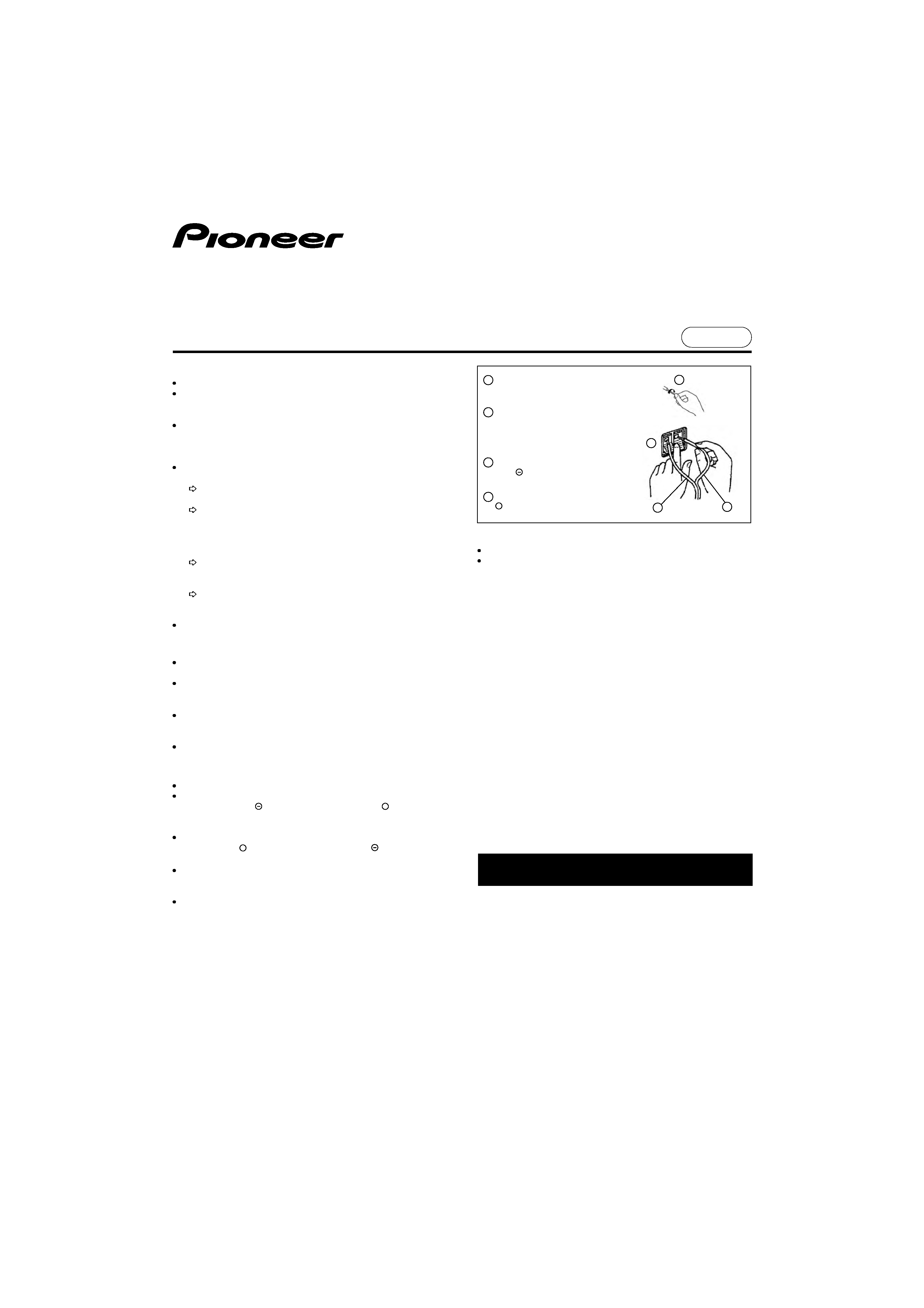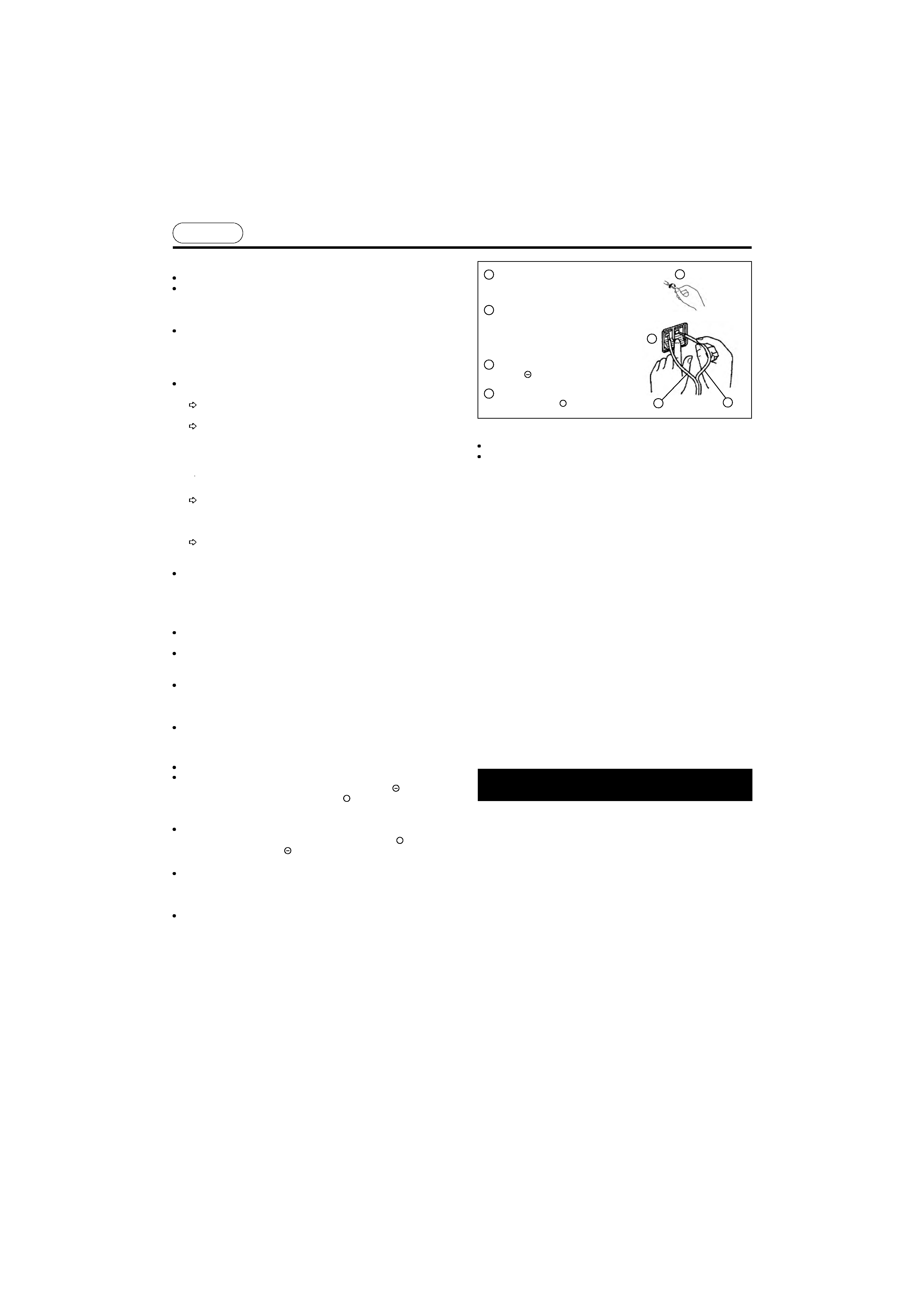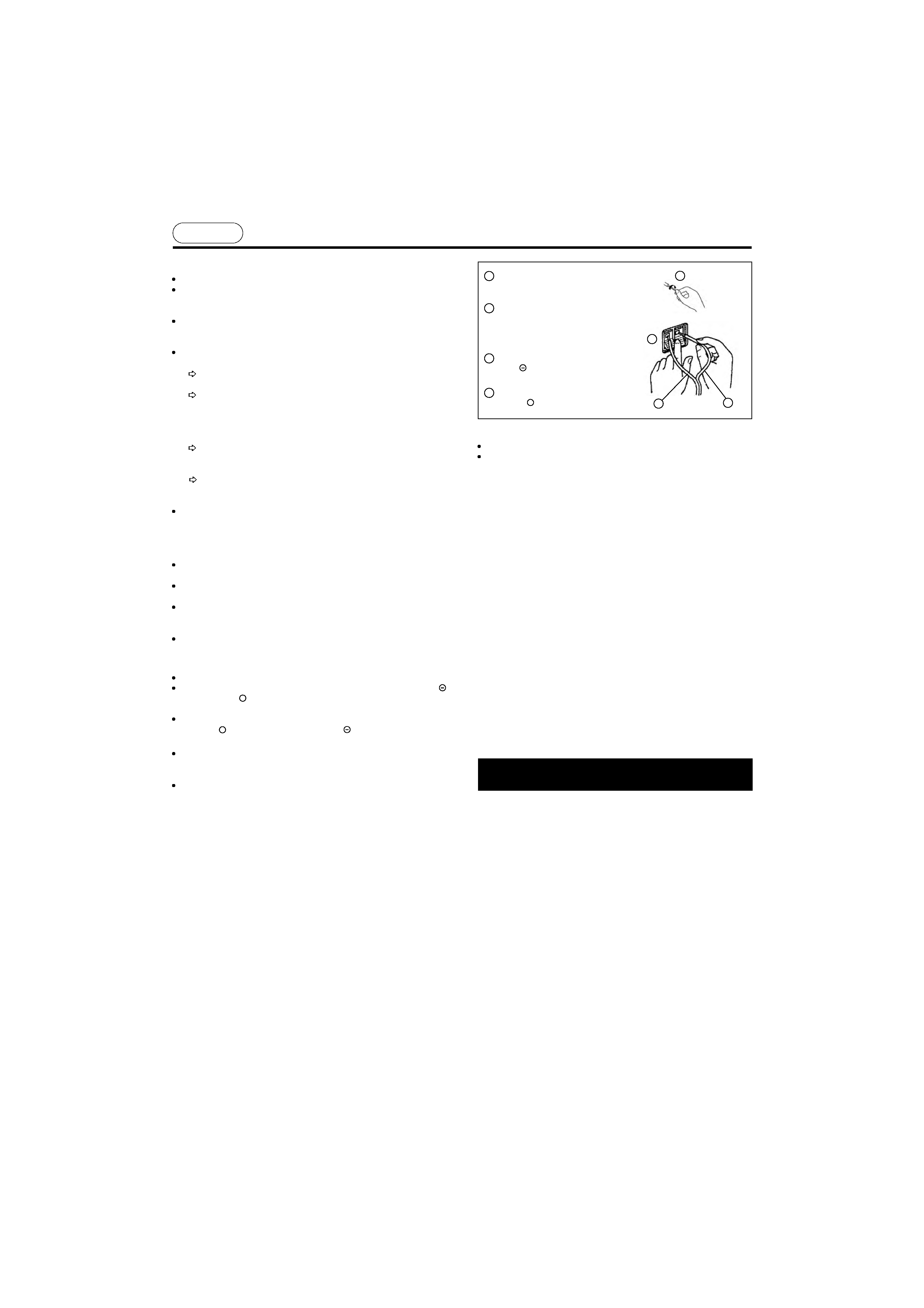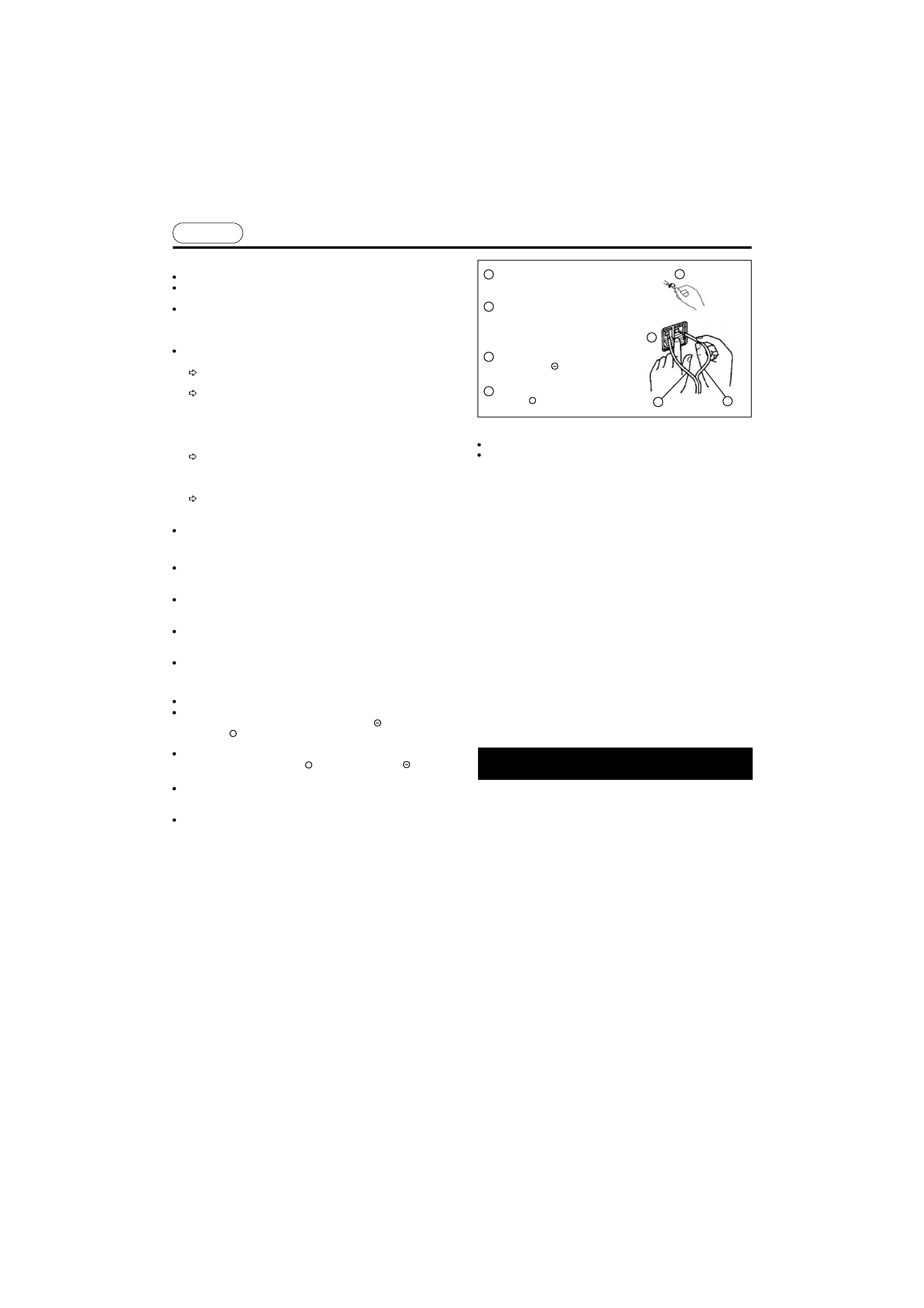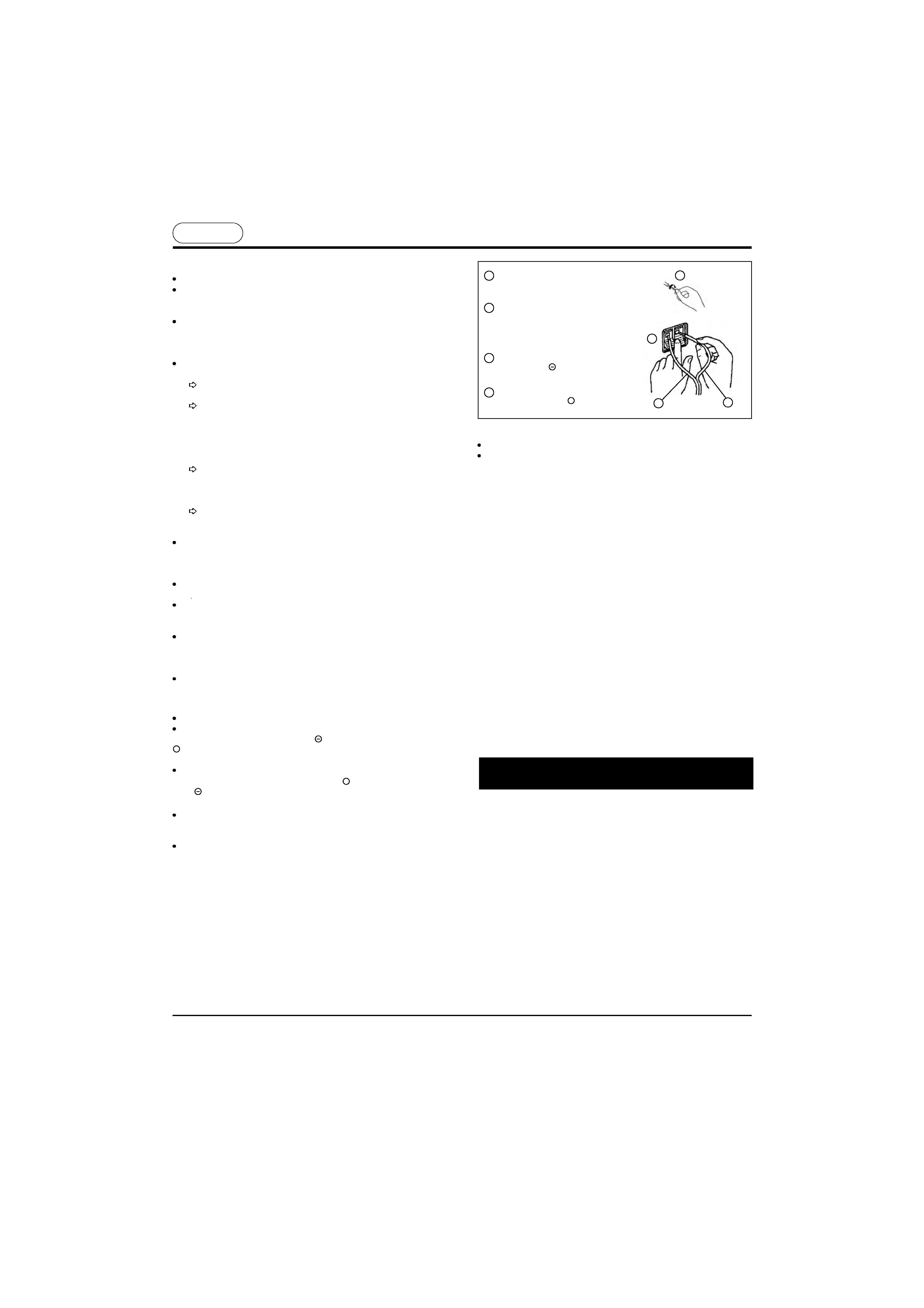
Français
ENTRETIEN DU COFFRET
Utiliser un chiffon de polissage pour essuyer la poussière et la saleté.
Lorsque le coffret est très sale, essuyer avec un chiffon doux trempé dans un
détergent neutre dilué cinq à six fois avec de l'eau, puis essuyer de nouveau
avec un chiffon sec. Ne pas utiliser de diluant, benzine, bombe aérosol et autres
produits chimiques sur ou à proximité des coffrets car ils pourraient détériorer
leurs surfaces.
Publication de Pioneer Corporation.
© 2007 Pioneer Corporation.
Tous droits de reproduction et de traduction réservés.
AVANT UTILISATION
Merci d'avoir acheté ce produit PIONEER.
Lire attentivement le mode d'emploi avant d'utiliser ces enceintes acoustiques
afin de savoir comment optimiser leurs performances. Après l'avoir lu, conserver
ce mode d'emploi dans un endroit facilement accessible en cas de besoin.
L'impédance nominale de ces enceintes est de 8
. Elles doivent donc être
connectées à un amplificateur acceptant ce type de charge (les impédances
minimale et maximale acceptées par l'amplificateur sont généralement indiquées
près des sorties Haut-parleurs : "4
à 16 " ou "6
à 16 " par exemple).
Pour éviter d'endommager ces enceintes acoustiques suite à une surcharge de
puissance électrique, prendre les précautions suivantes :
Ne pas fournir aux enceintes acoustiques une puissance supérieure à
celle maximale autorisée (voir Fiche Technique).
Toute connexion, mise sous ou hors tension d'un appareil de la chaîne
audio (lecteur CD, tuner...) doit être effectuée après avoir mis l'amplificateur
hors tension ou au moins avec les sorties Haut-parleurs coupées (si
l'amplificateur le permet). Dans le cas contraire, les bruits parasites
provoqués par ces manipulations parviennent aux enceintes acoustiques et
peuvent endommager les haut-parleurs d'aigus.
Lors du renforcement de certaines fréquences à l'aide d'un égaliseur
graphique ou de correcteurs de graves et d'aigus, veiller à ne pas pousser
excessivement le volume de l'amplificateur car la surcharge des enceintes
acoustiques sera atteinte plus rapidement.
Ne pas forcer un amplificateur de faible puissance à produire un niveau
sonore élevé car dans ce cas la distorsion harmonique augmente
rapidement, ce qui peut-être dangereux pour les haut-parleurs d'aigus.
Eviter de toucher les membranes et les suspensions des haut-parleurs car
celles-ci sont fragiles.
PRECAUTIONS CONCERNANT L'INSTALLATION
Pour une restitution sonore optimale des hautes fréquences, les haut-parleurs
d'aigus doivent se situer à hauteur des oreilles de l'auditeur.
Pour les basses fréquences, il est possible d'augmenter le niveau des graves
en positionnant les enceintes acoustiques près d'une paroi (l'augmentation
maximale étant obtenue pour une position dans un coin du local d'écoute).
Ne pas installer ces enceintes acoustiques à proximité d'un four ou d'un
appareil de chauffage. Eviter également l'exposition à de forts rayons du soleil.
Ces températures élevées peuvent provoquer une déformation de la structure du
coffret et nuire au son.
Ces enceintes acoustiques sont lourdes et fragiles, il est donc dangereux de
les installer dans une position instable.
CONNEXIONS
Couper l'alimentation de l'amplificateur (OFF).
Connecter les câbles aux bornes d'entrée à l'arrière des enceintes acoustiques:
Connecter le câble côté neutre à la borne
et celui côté sous tension à la borne
. Ne pas oublier que la borne d'entrée rouge a une polarité positive et que la
borne d'entrée noire a une polarité négative.
+
1 Retirer l'isolant à l'extrémité du câble et
vriller les brins.
2 Appuyer sur le levier du bornier, et
insérer l'extrémité du câble dans le trou,
puis relâcher le levier pour qu'il revienne
en position.
3
4
1
2
3
4
Connecter le câble de haut-parleur côté
neutre à la borne
.
Connecter le câble de haut-parleur côté
sous tension à la borne
.
+
Connecter les câbles aux bornes de sortie Haut-parleurs de l'amplificateur.
Connecter le câble côté sous-tension à la borne
et le câble côté neutre à la
borne
.
+
REMARQUES :
Vérifier que les câbles sont bien connectés aux bornes. Une connexion
incomplète peut non seulement entraîner une interruption ou une distorsion du
son, mais également un court-circuit et une panne de l'amplificateur.
Si les câbles d'une des enceintes acoustiques ont été branchés sans respecter
les polarités, vous constaterez à l'écoute d'un enregistrement stéréo que les
graves sont atténués et que l'image stéréo normalement située entre les deux
enceintes est inexistante.
Pièces accessoires
Câble .....................................................................................................................1
Mode d'emploi ....................................................................................................... 1
Garantie ................................................................................................................. 1
REMARQUE : Caractéristiques et conception sont sujettes à modifications sans
préavis en vue d'amélioration.
FICHE TECHNIQUE
Enceinte ......................................................................... Type étagère, bass-reflex
Système ............................................................................ 3 voies, 3 haut-parleurs
Woofer ................................................................ Cône de 25 cm
Medium .............................................................. Cône de 7,7 cm
Tweeter .............................................................. Cône de 6,6 cm
Impédance nominale ...................................................................................... 8
Bande passante ..................................................................... 35 Hz à 20 000 Hz
Sensibilité ................................................................... 90 dB/W à 1 m de distance
Puissance maximale ................................................................................. 190 W
Dimensions........................................ 334 mm (L) x 695 mm (H) x 273 mm (P)
Poids .......................................................................................................... 10,5 kg
Haut-parleurs :
Découvrez les nombreux avantages offerts en enregistrant votre produit en
ligne maintenant sur http://www.pioneer.fr (ou http://www.pioneer.eu).
http://www.pioneer.fr
http://www.pioneer.eu
PIONEER CORPORATION 4-1, Meguro 1-Chome, Meguro-ku, Tokyo 153-8654, Japan / Japon
PIONEER ELECTRONICS (USA) INC. P.O. BOX 1540, Long Beach, California 90801-1540, U.S.A. / Etats-Unis. TEL: (800) 421-1404
PIONEER ELECTRONICS OF CANADA, INC. 300 Allstate Parkway, Markham, Ontario L3R 0P2, Canada TEL: 1-877-283-5901, 905-479-4411
PIONEER EUROPE NV Haven 1087, Keetberglaan 1, B-9120 Melsele, Belgium / Belgique TEL: 03/570.05.11
PIONEER ELECTRONICS AUSTRALIA PTY. LTD. 178-184 Boundary Road, Braeside, Victoria 3195, Australia / Australie, TEL: (03) 9586-6300
PIONEER ELECTRONICS DE MEXICO S.A. DE C.V. Blvd.Manuel Avila Camacho 138 10 piso Col.Lomas de Chapultepec, Mexico / Mexique, D.F. 11000 TEL: 55-9178-4270
CS-7070_FRRD-213-B_8L.fm
Page 2
Tuesday, September 11, 2007
1:42 PM







